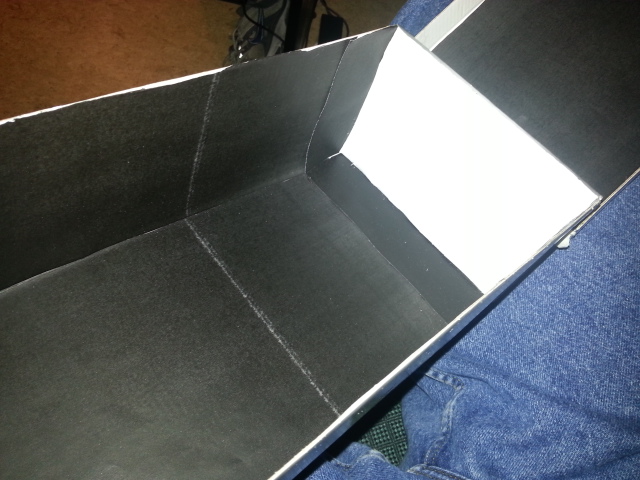The project was to create a pinhole camera.
The camera, shown below, was constructed from a shoebox.
One inside wall was papered with white paper, all others were papered with black paper.
Opposite the image wall two holes were created, one for light to enter the box, and one for a digital camera to
take a picture through.
A secondary box was built around the camera hole to reduce light leakage.
The imaging hole can be covered with a notecard to reduce the aperature size.
Outside
 |
Inside
 |










